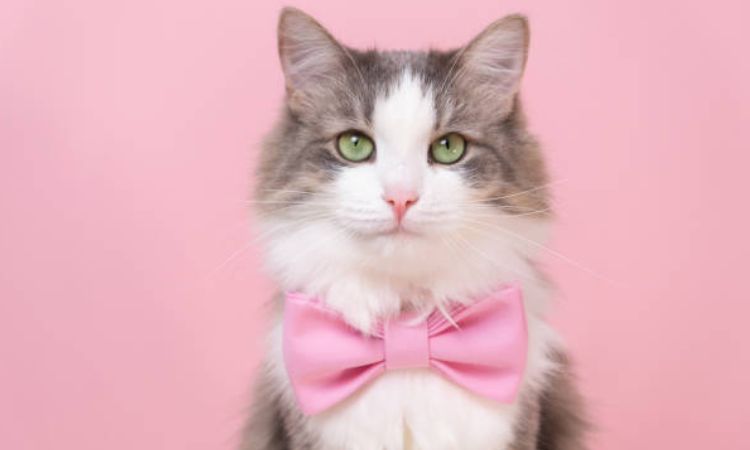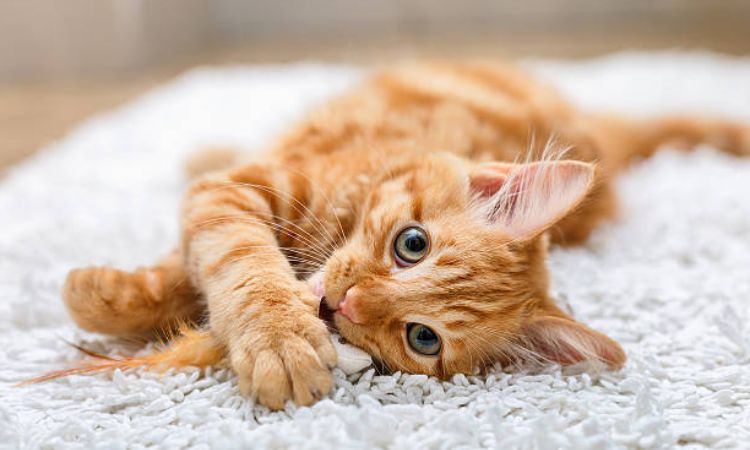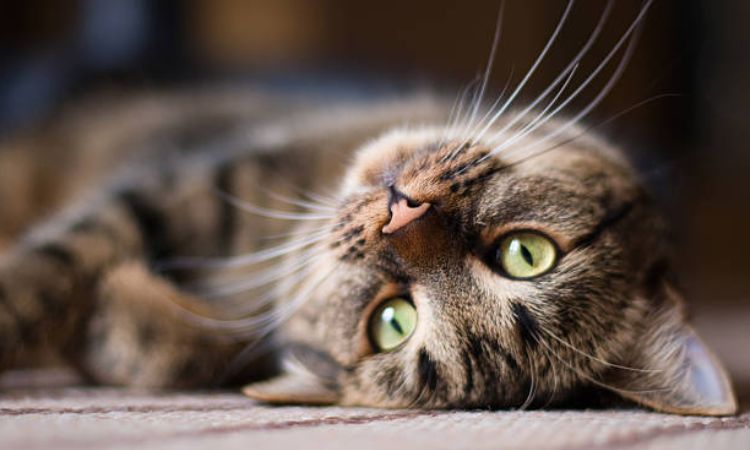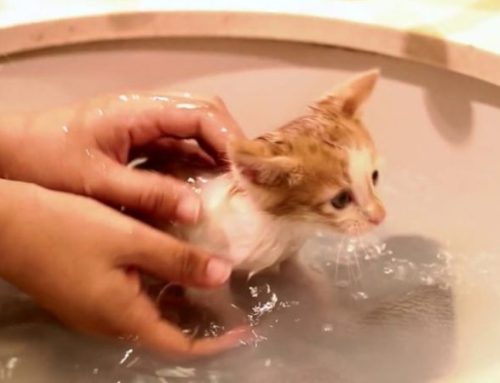Those tiny paws and whiskers add up over a lifetime, and cats may seem timeless, but just like us, they age and their years can pass in the blink of an eye. From playful kittens to wise senior cats, understanding how long your feline friend may live and what those years mean in human terms can help you make every moment count.
Discover the secrets behind cat lifespans, from indoor comforts to adventurous outdoor lives, and unlock the insights every cat parent wishes they knew.

The Cat Lifespan Average
Cats are beloved companions, but how long they live can vary widely. On average, domestic cats live 13–17 years, though some cats reach 20 years or more with proper care. Lifespan is heavily influenced by whether a cat lives indoors or outdoors. Indoor cats typically enjoy longer lives, averaging 13–17 years, because they are protected from environmental hazards like traffic, predators, disease, and harsh weather. In contrast, outdoor cats face numerous dangers and generally live only 2–5 years. Cats with a mix of indoor and outdoor time tend to fall somewhere in between.
Key Factors Influencing the Average Lifespan
Genetics and Breed
A cat’s genetic background plays a significant role in longevity. Mixed breed cats often benefit from hybrid vigor, leading to fewer inherited health problems and a longer average lifespan. Certain purebred cats can live long lives, such as Siamese or Burmese cats reaching 15–20 years, while larger breeds like Maine Coons typically have shorter lifespans of 10–13 years due to size-related health concerns.
Quality of Diet and Nutrition
Feeding your cat a complete, balanced diet ensures they receive essential vitamins, minerals, and nutrients for optimal organ function, immune health, and maintaining a healthy weight. Proper nutrition throughout life stages kitten, adult, and senior is key to extending a cat’s lifespan.
Consistent Veterinary Care
Regular checkups, vaccinations, and preventive care significantly improve longevity. Routine dental health maintenance and parasite prevention protect cats from serious illnesses that can shorten their lives. Early detection of health issues through bloodwork and wellness exams allows for timely treatment and long-term management.
The Definitive Cat Years to Human Years Conversion Chart
Understanding your cat’s age in human years can help you provide the right care at every stage of life, from kittenhood to senior years. Cats age differently than humans, and most veterinarians use a two-phase method to convert cat years to human years:
- Rapid early aging – A cat’s first two years of life correspond to the first 24 human years.
- Slower aging afterward – Each subsequent cat year is roughly equivalent to four human years.
This approach gives a more accurate picture than the old “multiply by seven” rule and helps pet parents anticipate changes in nutrition, activity levels, and preventive care needs.

Cat Lifespan in Human Years: Conversion Table
| Cat Age (Years) | Human Age Equivalent |
| 1 | 15 |
| 2 | 24 |
| 3 | 28 |
| 4 | 32 |
| 5 | 36 |
| 6 | 40 |
| 7 | 44 |
| 8 | 48 |
| 9 | 52 |
| 10 | 56 |
| 11 | 60 |
| 12 | 64 |
| 13 | 68 |
| 14 | 72 |
| 15 | 76 |
| 16 | 80 |
| 17 | 84 |
| 18 | 88 |
| 19 | 92 |
| 20 | 96 |
This table is a practical tool for cat owners who want to track their cat’s lifespan in human years, predict age-related health concerns, and adjust care routines accordingly.
The Great Divide: Indoor vs. Outdoor Cat Lifespan
When it comes to how long cats live, environment plays a crucial role. Indoor cats enjoy a much longer life expectancy, often reaching 13–17 years or more, thanks to protection from hazards, consistent nutrition, and routine veterinary care. In contrast, outdoor cats face a dramatically shorter life span, averaging only 2–5 years. Understanding the reasons behind this difference is essential for cat owners who want to maximize their feline companion’s longevity.
Why the Outdoor Cat Lifespan is Significantly Shorter
Outdoor cats encounter numerous threats that indoor cats typically avoid, which directly contributes to their reduced lifespan. Key factors include:
1. Exposure to Infectious Diseases
Cats that roam outdoors are far more likely to contract contagious illnesses such as feline leukemia virus (FeLV), feline immunodeficiency virus (FIV), feline infectious peritonitis (FIP), feline distemper, and upper respiratory infections. Interaction with stray or feral cats significantly increases the risk of disease transmission, making infections a leading cause of premature death in outdoor cats.
2. Risk of Accidents
Traffic, falls, and other accidents pose constant dangers for cats with outdoor access. Even cats that stay close to home can travel across several backyards, often encountering vehicles or unstable surfaces. Vehicle collisions are one of the most common causes of fatalities among outdoor cats, drastically reducing their overall cat lifespan outdoor.
3. Predation and Fights with Other Animals
Outdoor cats frequently face attacks from wildlife, stray dogs, or territorial cats. Coyotes, raccoons, and other predators pose a real threat in many neighborhoods, while fights with other cats can result in serious injuries or infection. These encounters, combined with disease risks, account for a significant portion of outdoor cat deaths.
While some cats benefit emotionally and behaviorally from outdoor exploration, these risks highlight why indoor living provides a much safer, longer, and healthier life. For owners who want their cats to enjoy outdoor experiences safely, leash walks, harnesses, and enclosed outdoor spaces offer controlled exposure while minimizing the dangers that cut outdoor cat lifespans short.

Does Sex Affect Cat Lifespan?
When it comes to a cat’s lifespan, gender can play a role—not because male or female cats are inherently weaker, but due to behavioral patterns and biological risks associated with each sex. Understanding these differences can help cat owners make informed decisions about spaying, neutering, and care routines to maximize their feline’s longevity.
The Impact on Male Cat Lifespan
Male cats, especially those who are unneutered, often exhibit behaviors that can shorten their lives. Unneutered males are more likely to:
- Roam long distances in search of mates, increasing the risk of accidents like traffic collisions.
- Engage in fights with other cats, which can lead to injuries or exposure to infectious diseases such as FIV (feline immunodeficiency virus) and FeLV (feline leukemia virus).
- Mark territory through urine spraying, which is not dangerous physically but indicates high roaming tendencies and potential stress.
Neutering male cats significantly reduces these risks. Neutered males are generally less likely to roam or fight, which not only keeps them safer but also correlates with a longer average lifespan. Studies show that neutered male cats can often live several years longer than their intact counterparts, largely due to decreased exposure to outdoor hazards and hormone-related diseases.
Longevity Trends for the Female Cat Lifespan
Female cats also benefit greatly from spaying. Beyond preventing unwanted litters, spaying reduces the risk of serious health issues:
- Reproductive cancers: Unspayed females are more prone to mammary tumors and uterine or ovarian cancers, which can impact both quality of life and lifespan.
- Behavioral changes: Spaying decreases the drive for roaming and reduces stressful mating behaviors, keeping cats safer indoors.
As a result, the cat lifespan female tends to improve significantly after spaying, with many spayed female cats living as long or longer than their male counterparts, particularly when paired with proper nutrition, veterinary care, and a safe living environment.
Secrets from the Oldest Cat Lifespan Holders
When it comes to feline longevity, some cats have amazed the world with lifespans far beyond the average. The most notable record-holder is Crème Puff, a domestic cat from Austin, Texas, who lived an astonishing 38 years more than triple the typical lifespan of an indoor cat. Such extraordinary cases highlight what’s possible under the right circumstances, though they remain exceptional.
Lessons from Extreme Longevity
While not every cat will reach Crème Puff’s age, there are valuable takeaways for cat owners who want to help their pets live long, healthy lives:
- Nutrition Matters Providing a complete, balanced diet tailored to your cat’s age and health needs supports organ function, immune health, and ideal body weight. Some of the longest-living cats benefited from carefully managed, high-quality diets throughout their lives.
- Safe and Enriched Environments Indoor cats consistently live longer than outdoor cats due to reduced exposure to disease, accidents, and predators. Creating a stimulating indoor environment with toys, perches, and safe outdoor enclosures allows cats to stay active while minimizing risks.
- Consistent Veterinary Care – Regular checkups, vaccinations, dental care, and preventive treatments for parasites significantly contribute to a cat’s lifespan. Many record-holding cats had attentive owners who monitored their health closely and intervened early when issues arose.
- Spaying and Neutering – Preventing reproductive health issues through spaying or neutering has been linked to longer lifespans, as it reduces the risk of certain cancers and decreases risky roaming behaviors in males.

5 Expert Tips to Help Your Cat Live Longer
Cats may not have nine lives, but with thoughtful care, you can maximize the quality and length of your feline companion’s life. Experts consistently highlight several key strategies that directly impact cat lifespan and overall well-being.
1. Maintain an Ideal Weight
Keeping your cat at a healthy weight is one of the most important factors for longevity. Obesity in cats can lead to serious health problems, including diabetes, arthritis, and heart disease. Feed your cat a complete, balanced diet appropriate for their life stage, and use portion control or measured meals—especially in multi-cat households. Regularly monitor their weight and body condition to catch early signs of weight gain.
2. Prioritize Dental Hygiene
Oral health plays a crucial role in a cat’s overall lifespan. Poor dental care can lead to infections, tooth loss, and even organ damage. Brushing your cat’s teeth regularly, providing dental-friendly treats, and scheduling professional cleanings with your veterinarian can help prevent painful and life-threatening conditions.
3. Ensure Mental Stimulation
Cats thrive when their minds are active. Interactive play, puzzle feeders, and enrichment activities prevent boredom, reduce stress, and keep your cat agile and engaged. Mental stimulation is especially important for indoor cats, who rely on their environment for exercise and activity.
4. Semi-Annual Veterinary Visits for Senior Cats
As cats age, regular health monitoring becomes even more critical. For senior cats (10+ years), visiting the veterinarian twice a year helps detect early signs of kidney disease, thyroid disorders, arthritis, and other age-related conditions. Early detection allows timely intervention, improving outcomes and extending lifespan.
5. Create a Safe, Enriching Indoor Environment
Indoor-only cats generally live significantly longer than outdoor cats, thanks to reduced exposure to disease, predators, and accidents. Provide climbing structures, scratching posts, safe hideaways, and access to windows or outdoor enclosures. A stimulating indoor environment keeps your cat active, reduces stress, and enhances both physical and mental health.






